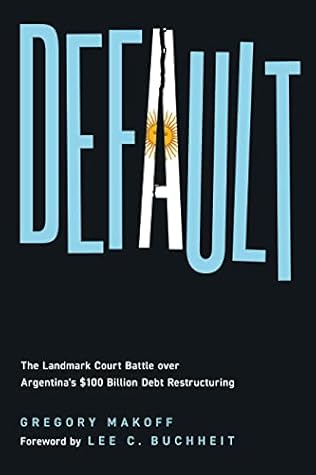Kindle Notes & Highlights
Read between
August 21, 2024 - June 1, 2025
No other country in history had defaulted on close to $100 billion of bonds comprising 152 different instruments denominated in seven different currencies, documented under the laws of eight different countries, and owned by investors all over the world, including more than half a million retail investors in Italy, Germany, Austria, Japan, and elsewhere.
What ensued was a three-way power struggle of epic proportion over who would control the terms of Argentina’s upcoming transaction: the IMF, Argentina, or organized creditors. Each of these parties had a reason to claim that they should control the process. The IMF was an international organization, the lender of last resort, and its staff was uniquely qualified to objectively determine the amount of debt a country could safely sustain. In the last quarter of 2003, however, the U.S. Treasury had knocked the IMF out of contention by insisting that it not intervene in the negotiations. It looked
...more
The meaning of the Latin phrase “pari passu” was the crux of the matter. In English, it translates as “in equal step,” which Elliott took to mean equal payment in its argument to the Belgian court. In other words, whenever Peru made a payment to any of its bondholders, it would have to pay all its bondholders any amounts that were due, regardless of whether they had accepted a restructuring deal or held out. By this logic, if Peru made a payment on its performing Brady bonds, it would also be obliged to pay any amounts due on the defaulted Peruvian loans Elliott held. As the firm’s expert
...more
Remarkably, this important ruling, which supported the equal payments interpretation of Argentina’s pari passu clause that, in turn, made it much more likely that a payment blockade would be imposed, attracted little comment in the press and didn’t move the market. Payments to holders of $30 billion of performing bonds that Argentina had issued in its 2005 and 2010 offers were now at risk, but the market was asleep at the wheel.
Judge Griesa’s February 23, 2012, order finally woke the market from its deep slumber. EMTA held a seminar devoted to the topic for its members on April 18, 2012,23 for example, while Georgetown’s Anna Gelpern posted commentary on the case to the Credit Slips blog.24 Most observers and market participants were sanguine about how it would turn out, however, assuming that the Second Circuit would shoot down Griesa’s ruling or that Argentina would cave and pay the holdouts if it lost on appeal. The possibility that Argentina might default on $30 billion of performing bonds just to avoid paying
...more
Clark thus captured the essential problem of sovereign debt litigation without bankruptcy or CACs: At what point should the courts stop going to bat for holdouts trying to get a better deal: When 76% of claims are settled? When 92% are settled? When 99% are settled? When 99.9% are settled? At what point should the objective of restoring a normal market override the rights of individual plaintiffs to seek to get paid in full?


